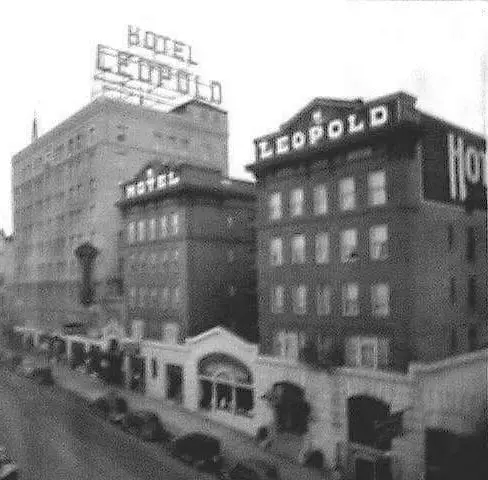
Captain Byron built his namesake Byron Hotel in 1899. It was a nine-story, brown brick building of the Chicago style with eclectic elements from the Mission school. Once credited as being the finest hotel in Bellingham, as well as a thriving social center, most of the structure was demolished in 1967. Today’s last remnant, the Leopold Hotel, was a 1929 addition to the original building.
In the time of the Byron Hotel’s construction, Bellingham was characterized by extensive growth spurred not only by successful ventures in timber, fishing and coal, but by speculation that Bellingham would become the Terminus of the Great Northern Railroad. The hotel was built with a red tile roof and round arches that gave it a subtle California look. At street level, the facade is elegantly hand painted with high glaze tiles and leaded glass windows that still display the hotel logo in the entryway. A newspaper clipping from 1899 exclaims that the Byron hotel was “centrally located within easy access of all points of interest. Large rooms on second or third floor are comfortable and tastefully furnished.”
Leopold Schmidt was a brew master who established the Bellingham Bay Brewery who bought the hotel upon moving to Bellingham in 1910. When he died in the hotel in 1914 his appointed hotel manager, Henry Schupp, renamed the hotel Leopold in his honor.

In 1913 the hotel consisted of 200 rooms, 100 of which with private baths, a dining room that could accommodate 150 people and twenty-five additional sample rooms. Two additions came later, in 1922 the Tulip room known today as the Crystal Ballroom and another addition in 1929 increased the number of rooms to 500. The Leopold tower, since the main hotel’s demolition in 1967, has held a wide variety of restaurants and businesses, including a couple years where it was the meeting room for the Bellingham Central Lion’s Club. The Leopold Hotel, on both the National and Local Historic Registry, is presently being remodeled to apartments and a hotel.
